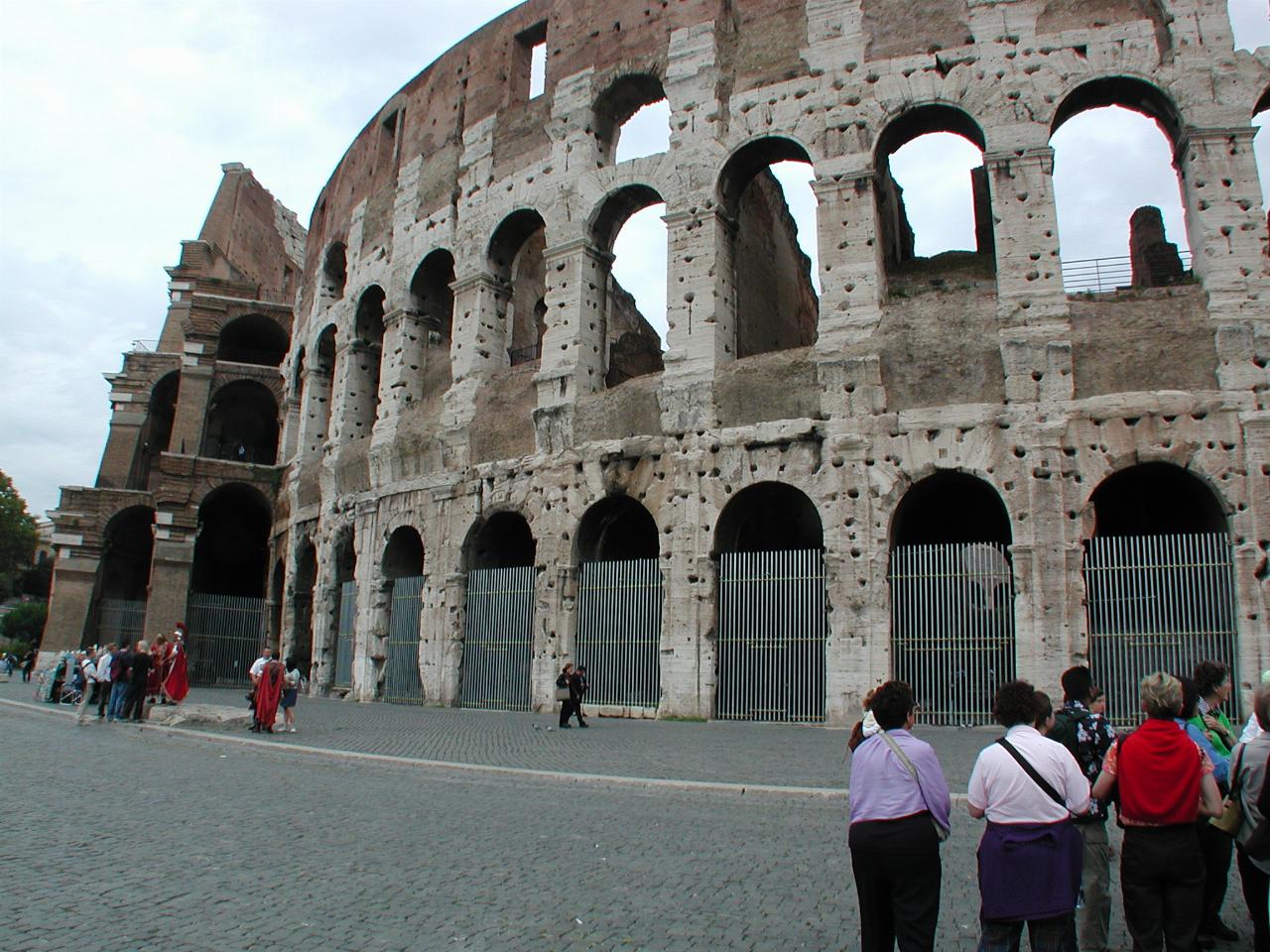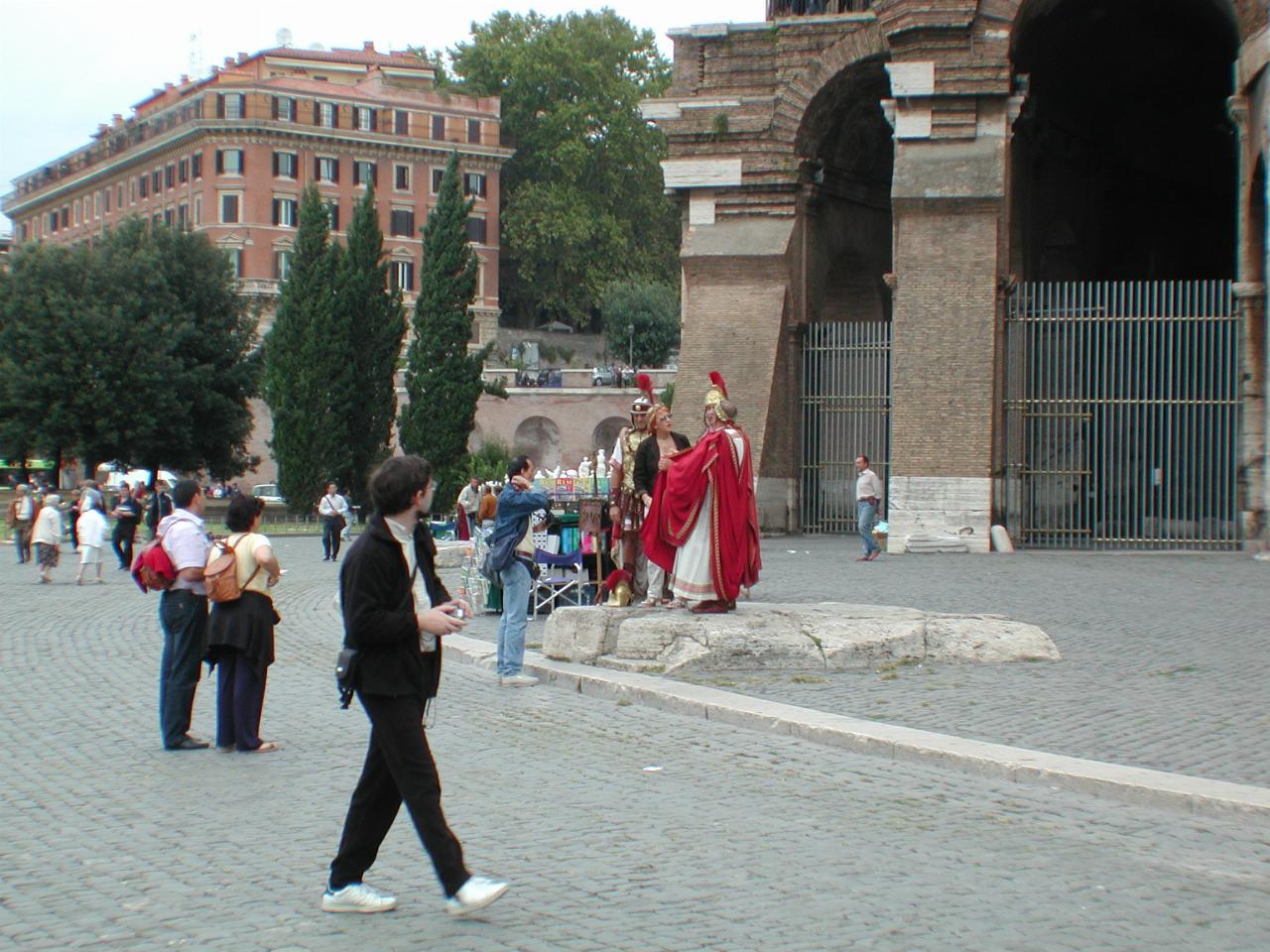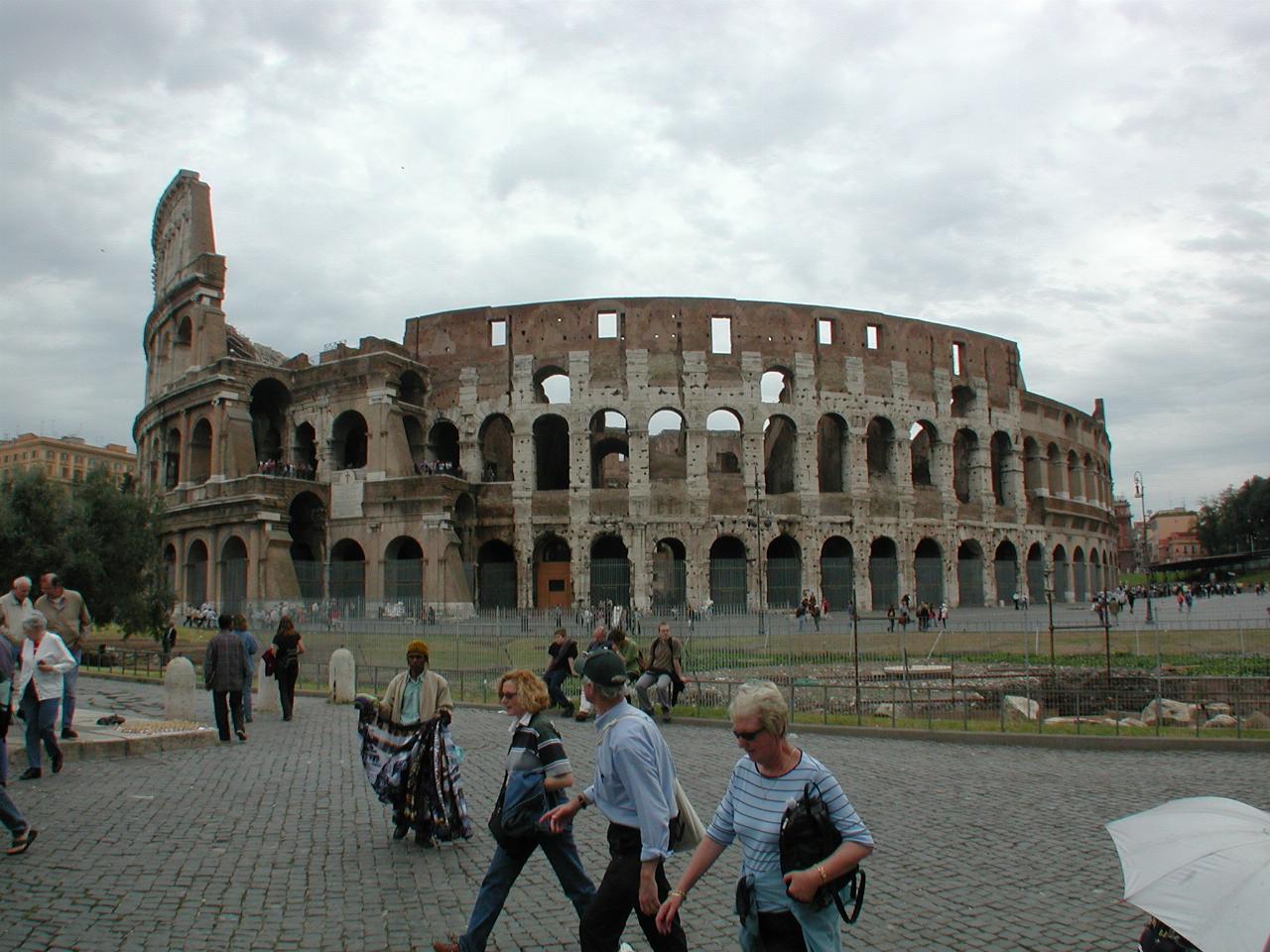
The building is elliptical, with a major axis of 187m, and a minor axis of 155m. Height is 50m from ground level to the external ring. It was designed to hold an estimated 80,000 spectators! Around the exterior run three levels of arches, adorned with Doric, Ionian and Corithian columns, and a fourth floor with Corinthian pilasters. Of the 80 arches that make up the elliptical ring, four correspond to the entrances on the two axes, of which only the entrance of honour, reserved for the Emperor, remains.
The end of the Roman Empire was marked by two earthquakes (442 and 508), which caused great damage to the structure. However, it was still usable during the time of Theodoric, ruler of the Romano-Barbaric kingdom of the Goths, who in 523 staged the venationes or traditional wild animal hunting games. From that point began the total abandon that saw the Colosseum used as a cemetery, a fortress and above all, after the earthquake of 1349, as a quarry for building materials. The marble which once covered it almost entirely was reused in the busy period of construction during the Renaissance. In order to halt the serious decay of the Colosseum, Pope Benedict XIV (1740 - 1758) consecrated the old amphitheatre by setting up a Way of the Cross and raising a cross on the site.
The purpose of the building was much the same as a modern stadium. Games included professional gladiators fighting to the death, wild animal hunts and naval battles after the centre was filled with water!
There was also a canvas awning to protect spectators from the sun. This was manipulted by sailors, who also participated in the naval battles.

An ancient building in the middle of a modern city. Note that the outer wall has been stabilised on the right hand side.

The holes in inner structure walls are where the marble was attached to the structure. Bronze (?) rods were embedded into the structure to provide attachment points.

Theatre for tourists - "Roman" legionnaires for posing with tourists.

Final view as the tour group walked towards the Roman Forum. Note the scarf seller - they rapidly switched to selling umbrellas when it started to drizzle later in the day!